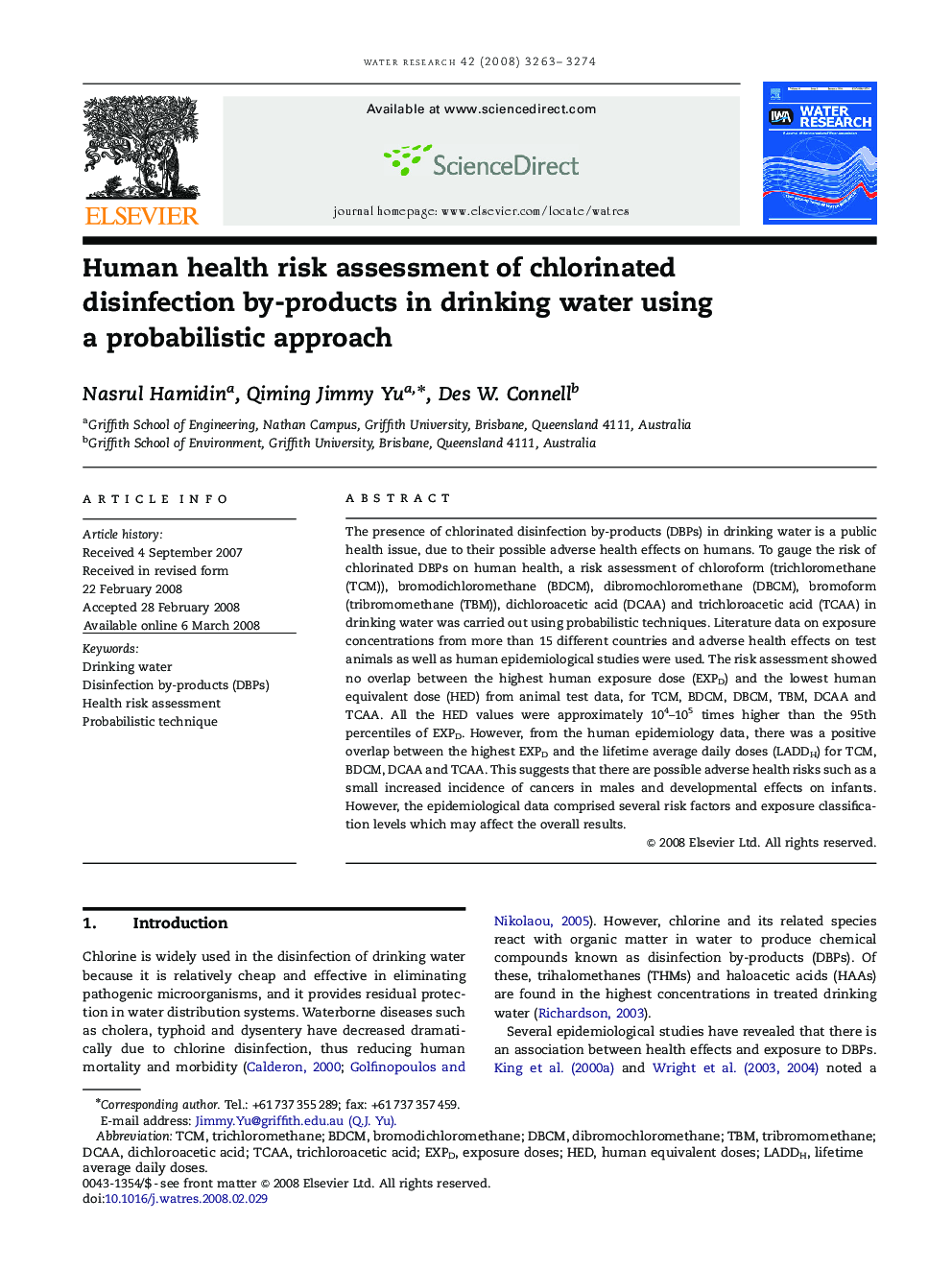| Article ID | Journal | Published Year | Pages | File Type |
|---|---|---|---|---|
| 4485460 | Water Research | 2008 | 12 Pages |
The presence of chlorinated disinfection by-products (DBPs) in drinking water is a public health issue, due to their possible adverse health effects on humans. To gauge the risk of chlorinated DBPs on human health, a risk assessment of chloroform (trichloromethane (TCM)), bromodichloromethane (BDCM), dibromochloromethane (DBCM), bromoform (tribromomethane (TBM)), dichloroacetic acid (DCAA) and trichloroacetic acid (TCAA) in drinking water was carried out using probabilistic techniques. Literature data on exposure concentrations from more than 15 different countries and adverse health effects on test animals as well as human epidemiological studies were used. The risk assessment showed no overlap between the highest human exposure dose (EXPD) and the lowest human equivalent dose (HED) from animal test data, for TCM, BDCM, DBCM, TBM, DCAA and TCAA. All the HED values were approximately 104–105 times higher than the 95th percentiles of EXPD. However, from the human epidemiology data, there was a positive overlap between the highest EXPD and the lifetime average daily doses (LADDH) for TCM, BDCM, DCAA and TCAA. This suggests that there are possible adverse health risks such as a small increased incidence of cancers in males and developmental effects on infants. However, the epidemiological data comprised several risk factors and exposure classification levels which may affect the overall results.
